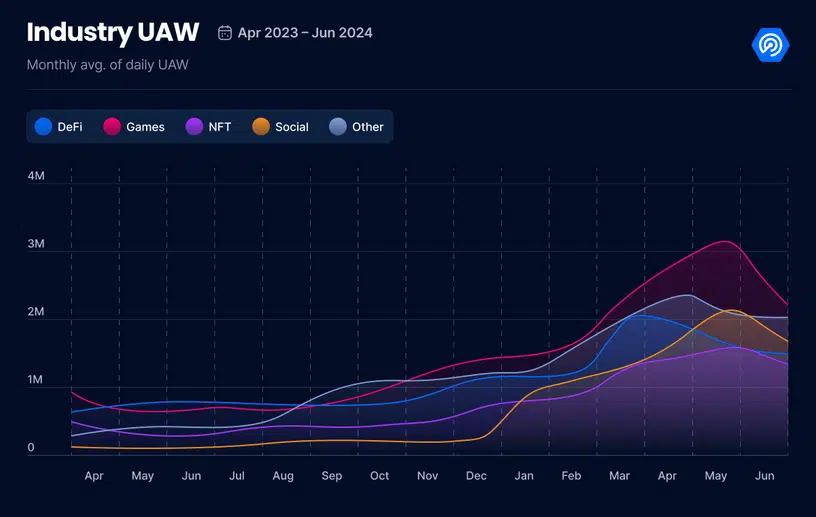Disclosure: The views and opinions expressed here belong solely to the author and do not represent the views and opinions of the crypto.news main article.
No single entity, interest group, or political faction defines (or dominates) the blockchain industry. But despite all the differences, positive and negative, there is a shared mission: achieving mass adoption.
You might also like: Is investing in classic shares always safer than defi? Not exactly | Opinion
More people, businesses and communities worldwide need to benefit from crypto and blockchain technology. To fully achieve this, anyone should be able to build high-quality dApps and on-chain tools. Developers must have the freedom to express themselves in any language and on any chain. They must be able to build once and deploy anywhere.
While the recent institutional acceptance and political attention may seem exciting, they are primarily driven by vested interests. What is “crypto-friendly” now will not mean crypto-friendly in five years, as Vitalik Buterin pointed out. However, good dApps are actual manifestations of the principles and potential of blockchain. Once deployed, they can continue to serve the community on predefined terms enforced by censorship-resistant blockchains – ideally even when the original creator is not there, as with Bitcoin (BTC).
So the end game gives developers (and users) more power. No interest or agenda, political or technological, will determine the way forward. In its purest form, crypto is an expression of freedom: freedom from intermediaries and censorship, freedom to express oneself through code.
DApps make blockchain real and valuable
Blockchain technology must solve real, everyday problems to transition from speculative adoption to long-term mass/retail adoption. However, the recent spike in financial nihilism and the adoption of meme coins shows that people value speculation more than fundamental principles.
Yet speculation without an actual underlying value is unsustainable. Only the apps and platforms that generate value through fees, transaction volumes, and so on will still be around in a decade or more. For example, as of August 7, 2024, Uniswap collected approximately $13 million in weekly fees – that’s hundreds of millions in annual revenue. With the 10x price-to-earnings heuristic often applied to high-growth tech companies, Uniswap’s (UNI) $4.5 billion valuation appears to be on par, and the market is pricing it appropriately.
DApps make crypto or blockchain technology usable for end users. They bring the power of immutable code – which requires no intermediaries – to the masses. Trading, lending, gaming, rideshares, etc. can all take place without any single entity extracting value in an opaque and unfair manner.
Given crypto’s roots in Bitcoin and its proximity to money, the financial sector was the first sector to be disrupted. But the recent rise of decentralized gaming, socials (DeSoc), physical infrastructure (DePIN), AI, etc., on cost-effective, high-throughput chains like Base or Solana shows how the technology has a much broader scope than disrupting financial products. /processes.
Therefore, there is a rising demand in the global dApp industry, where daily unique active wallet interactions reached an all-time high in the second quarter of 2024.

Unique active portfolios in the industry | Source: DappRadar
It took 99 years for landline telephones to reach their maximum adoption. Cars reached 78. However, computers exceeded the 89% adoption rate in 24 years. While social media and tablets have achieved a similar performance in 14 and 7 years respectively.
This shows how newer technologies have achieved majority adoption in significantly less time than their predecessors. But this requires key enablers to be in place, which could be dApps for blockchain technology.
From user-friendly graphical interfaces to making backend components frictionless/invisible to end users, dApps are inevitable. And those who say that blockchain needs more dApps and less infrastructure are absolutely right in this view.
Everywhere, always and all at the same time
As crypto continues to grow, many talented developers have entered the space, including some of the brightest minds from Google, Meta, IBM, etc., such as the founding team of Aptos and Sui, among others. As a result, great things have happened. Move rising like a phoenix from Diem’s ashes and SVM from FTX are two good examples of a new generation of developers choosing alternatives to the EVM status quo. Lowering the barriers to dApp development is now critical so that more projects can emerge.
For a long time, the Ethereum Virtual Machine was the only standard available to blockchain developers. Together with Solidity, the EVM was built to deploy and run custom programs on Ethereum. Similarly, there is ‘Solana VM’ on Solana, ‘Move VM’ on Aptos or Sui, Web Assembly on Cosmos, etc. While these are great innovations with many benefits, they have caused fragmentation and vendor lock-in. EVM-based dApps cannot run natively on Solana, and SVM-based dApps cannot use Ethereum, Binance Smart Chain, or other EVM-supported platforms.
Meanwhile, deploying dApps on multiple chains is very cumbersome and infeasible due to the high costs. First, developers must create and maintain multiple codebases. So truly interoperable multi-chain dApps require a lot of work. Projects such as AAVE or Pancakeswap are exceptions, because they have the necessary resources for implementation in multiple chains. But even for them, innovation in non-EVM code lags behind EVM code due to high cost and time requirements. Additionally, for end users, vendor lock-in means having to use multiple wallets and hold assets from different ecosystems because their favorite dApp, wallet, or token doesn’t support the new chain they want to use.
Developers want freedom from such walled gardens, for the sake of blockchain’s long-term progress, or something else. They need to be able to build an application once and serve it to users across ecosystems, asset classes and VMs, not just one. Users have a similar need.
Abstracting wallets, chains, and even VMs is a viable solution. It allows developers to build dApps on any VM in any programming language and run them on any other chain or VM. And that too with little or no extra costs and safety problems.
Furthermore, removing the underlying complexities will allow anyone to build robust dApps with just a few clicks. That will change everything. Web3 will mirror the performance and speed of Web2 following the mass market adoption of container technologies such as Kubernetes, which helped eliminate public cloud vendor lock-in. To the extent that builders can use different chains/platforms for different aspects of their dApps based on specific needs and requirements, such as Solana for high-frequency transactions, Ethereum for settlement finality and data availability, and so on.
Resolving vendor lock-in will improve the developer and end-user experience. Everyone can reap the benefits of the underlying tech stack and that is the path to mass adoption. More dApps could hit the market than ever before. Not all of them will be great. But the more there are, the more likely you are to find the next game changer.
Read more: DAOs and centralized organizations must work together | Opinion
Alejo Pinto
Alejo Pinto is co-founder and Chief Growth Officer of Pontem Networka product development studio that builds Move, SVM and EVM compatible products to enable a more developer and user-friendly web3. He has an extensive background in the technology industry, including a significant period at IBM, where he gained valuable experience in blockchain applications.

